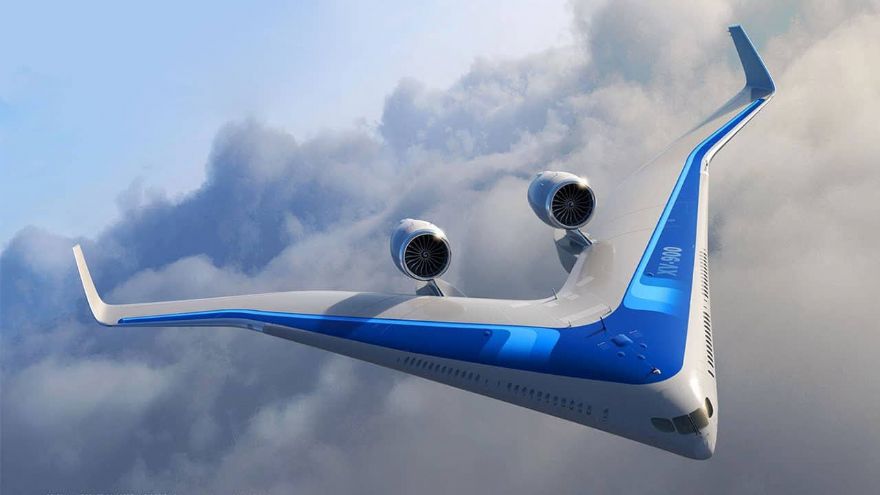
A team of researchers and engineers from
Delft University of Technology (TU Delft) in the Netherlands, recently tested the first scaled flight model of an energy-efficient aircraft design called the Flying-V which could one day carry passengers in its wings.
The project was announced last year together with Dutch airline KLM, and after a period of extensive wind tunnel testing and a series of ground tests in the Netherlands, the aircraft has successfully completed its maiden flight.
Project leader Dr Roelof Vos and his team tested the 22.5kg and 3m wide scale model of the Flying-V along with engineers from Airbus. With a drone pilot at the controls, the Flying-V took off, flew a number of test manoeuvres and approaches until the batteries were nearly drained and it was landed.
Dr Vos said: “One of our worries was that the aircraft might have some difficulty taking off, since previous calculations had shown that ‘rotation’ could be an issue. The team optimised the scaled flight model to prevent the issue but the proof of the pudding is in the eating. You need to fly to know for sure.”
Rotation on take-off was performed easily and occurred at a speed of 80km/h, the aircraft’s thrust was good and flight speeds and angles were as predicted.
However, the team had a challenging week in which they had to change the centre of gravity of the aircraft and fix the antenna to improve telemetry. The flight has now also confirmed that the current design still shows too much ‘Dutch roll’, causing a slightly rough landing. A next step for the team is to use the data collected during the flight for an aerodynamic (software) model of the aircraft.
This will make it possible to programme it in a flight simulator to be used in future research, while further improving the flight characteristics. The team will also prepare the scale model for future real-time flight tests.
The Flying-V is a design for a highly energy-efficient long-distance aircraft. Its design integrates the passenger cabin, the cargo hold and the fuel tanks in the wings, creating a spectacular V-shape.
Computer calculations have predicted that the aircraft’s improved aerodynamic shape and reduced weight will reduce fuel consumption by 20% compared to today’s most advanced aircraft. The next step will be to provide the Flying-V with sustainable propulsion, taking into account the fact that the design can carry liquid hydrogen instead of kerosene.